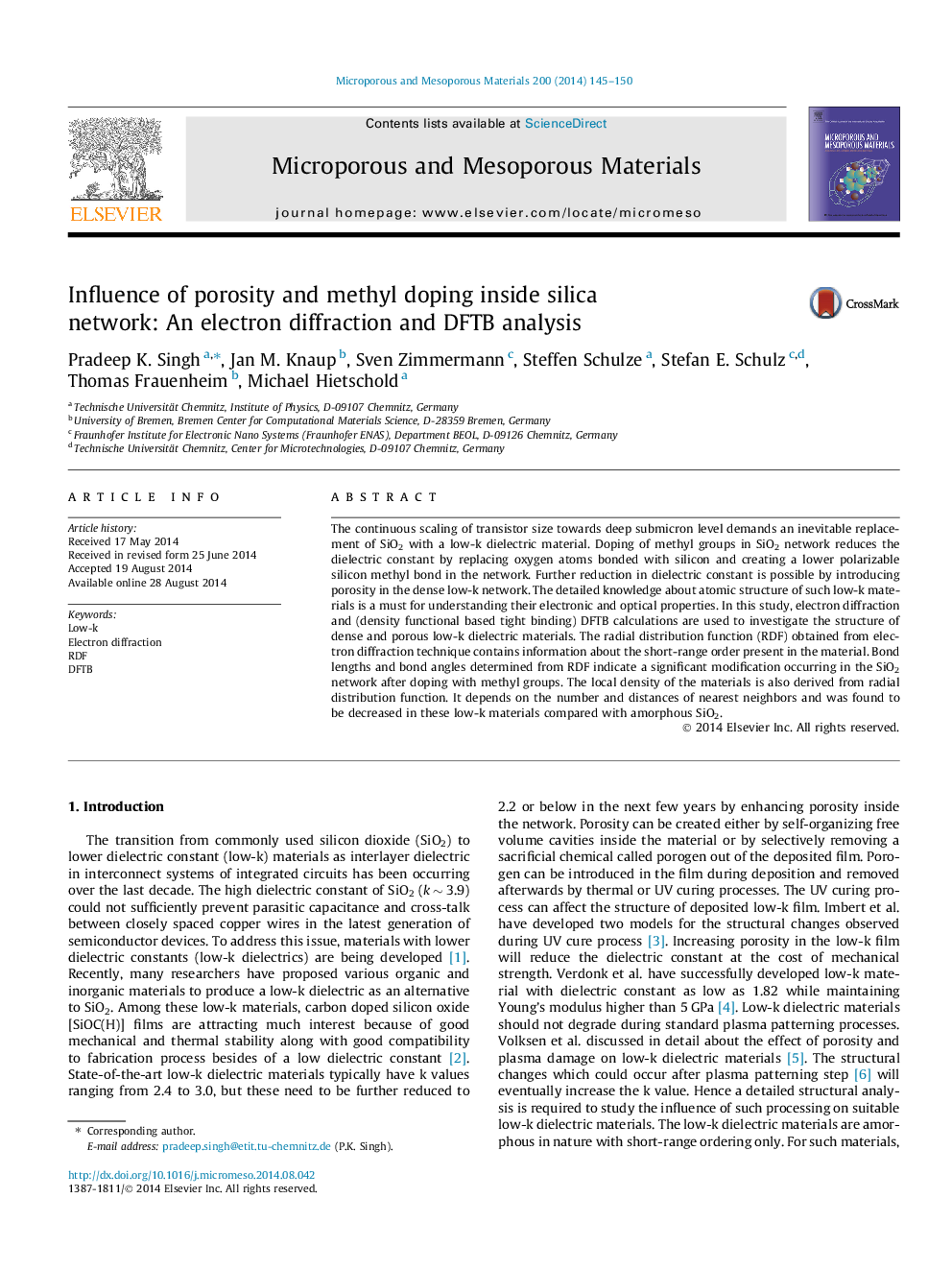| کد مقاله | کد نشریه | سال انتشار | مقاله انگلیسی | نسخه تمام متن |
|---|---|---|---|---|
| 72697 | 49031 | 2014 | 6 صفحه PDF | دانلود رایگان |

• Structural analysis of low-k dielectric materials is performed by electron diffraction.
• Radial distribution function is used for short-range order in amorphous material.
• Bonding characteristic and density of low-k materials are determined from RDF.
• Dense and porous low-k materials are investigated by RDF.
The continuous scaling of transistor size towards deep submicron level demands an inevitable replacement of SiO2 with a low-k dielectric material. Doping of methyl groups in SiO2 network reduces the dielectric constant by replacing oxygen atoms bonded with silicon and creating a lower polarizable silicon methyl bond in the network. Further reduction in dielectric constant is possible by introducing porosity in the dense low-k network. The detailed knowledge about atomic structure of such low-k materials is a must for understanding their electronic and optical properties. In this study, electron diffraction and (density functional based tight binding) DFTB calculations are used to investigate the structure of dense and porous low-k dielectric materials. The radial distribution function (RDF) obtained from electron diffraction technique contains information about the short-range order present in the material. Bond lengths and bond angles determined from RDF indicate a significant modification occurring in the SiO2 network after doping with methyl groups. The local density of the materials is also derived from radial distribution function. It depends on the number and distances of nearest neighbors and was found to be decreased in these low-k materials compared with amorphous SiO2.
Figure optionsDownload as PowerPoint slide
Journal: Microporous and Mesoporous Materials - Volume 200, December 2014, Pages 145–150